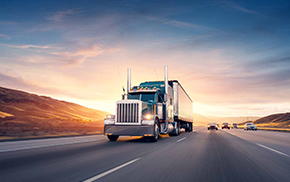A. TYPE OF BUSINESS:
A.1. Distributed in the form.
– Private enterprise
– State enterprises
– Co., Ltd
– Joint Stock Company
A.2. Distributed by business lines.
– Enterprises directly producing.
– Enterprises providing services in the fields of finance, banking, trade, consulting, construction design, informatics and technology transfer ….
B. OBJECTIVES OF ASSESSMENT OF ENTERPRISE VALUE:
– Valuation of enterprises for the purpose of equitization, on the stock exchange
– Evaluate the enterprise value for the purpose of divestment
– Valuation of enterprises for joint venture purposes
– Valuation of enterprises for the purpose of buying, selling, transferring, leasing, …
– Appraising enterprises for the purpose of changing the form of operation.
– Valuation of enterprises for the purpose of joint venture, establishment or dissolution of enterprises.
– Valuation of enterprises for the purpose of mortgage, bank loan guarantee.
– Valuation of enterprises for the purpose of issuing additional shares …
C. DOCUMENT PROVIDED:
I. LEGISLATION OF ORGANIZATIONS – INDIVIDUAL REQUIREMENTS FOR PRICE ASSESSMENT:
1. For individuals:
– ID card photo
– Household registration photo
2. For legal entities:
– Decision to establish a business
– Certificate of business registration
– Certificate of tax code issuance
– Decision to establish a dependent unit (if any)
– Minutes of capital contribution
– Other renaming decisions, additional functions ….
II. LEGAL OF DOANG APPROVED PRICE ASSESSMENT REQUIREMENTS:
1. Real estate:
– Certificate of LURC
– Notarized transfer contract
– Location map
– Building permit
– Status map
– Registration fee declaration
– Land lease agreement
– Completion minutes
– Completion drawings
– Drawings before leveling
– Contract of transportation and leveling
– The minutes of partial acceptance
– Certificate of construction ownership
– Minutes of construction inspection completed
– Profile of settlement
– Profile estimates
– Blueprint
– Current state drawing
– Construction contracts
2. Lines of machinery and equipment:
– Economic contract of sale and purchase
– Liquidation records
– Handover and acceptance records
– Technical drawings
– Detailed purchase and sale invoices
– Catalogue….
3. Means of transport:
+ For cars:
– Vehicle registration certificates
– Motor vehicle insurance certificate
– Certificate of technical safety inspection and environmental protection of road motor vehicles
+ For ships:
– Certificate of inland waterway vehicle registration
– Minutes of technical inspection of inland waterway means
– Technical inspection book of inland waterway means
– Certificate of technical safety of inland waterway vehicles
– Ship certificate
– International dry leave certificate
– Certificate of preventing pollution caused by oil
– International certificate of ship security
4. Imported assets:
– Commercial contract
– INVOICE
– PACKINGLIST
– Customs declaration
– Certificate of origin
– Quality inspection paper
– Purchase and sale invoices detailing …
5. For financial data:
Provide records and documents related to financial data of the whole Company. As follows:
5.1. Profile of brand value determination (if any):
– Financial statements of audited companies:
– Accounting balance sheet for 5 consecutive years before determining the value of enterprises and at the time of valuation of enterprises.
+ Year …………… c
+ Year …………… c
………………………………………….. …………………….
– Table of business results for 5 consecutive years before determining the value of the enterprise and at the time of enterprise valuation:
+ Year …………… c
+ Year …………… c
………………………………………….. …………………….
– The table of cash flows in the 5 following years before determining the value of the enterprise and at the time of enterprise valuation:
+ Year …………… c
+ Year …………… c
………………………………………….. …………………….
– The balance sheet of accounts for 5 consecutive years before determining the value of enterprises and at the time of enterprise valuation:
+ Year …………… c
+ Year ……………
c
………………………………………….. …………………….
– Notes to the financial statements for the 5 consecutive years before determining the value of the enterprise and at the time of enterprise valuation:
+ Year …………… c
+ Year …………… c
………………………………………….. …………………….
5.2. Relevant documents:
– Business and production plans of enterprises in 01-05 years (or 1 to 2 years if any). Details of production plan such as output of each item (1-2 years or 1-2 years), detailing all related costs to calculate the cost of each product that the enterprise produces (1 – 2 years).
– Detailed investment plans such as building a new factory (providing the whole construction project, investing more in machinery and equipment for production, project implementation schedule …), projects market expansion (specifying how the market is expected to expand, how specific expansion plans are, progress of implementation …) and other investment plans (if any).
– Marketing costs, advertising and marketing costs, construction and brand promotion costs in recent years (each year).
– Information about businesses such as brand, business strategy, marketing strategy (including product strategy, price strategy, distribution strategy and promotion strategy) in the next 5 – 10 years. ..
– Certificates of merit, certificates of merit, titles … related to products gained in the past time.
– Certificate of trademark of each type of product (Ex: Certificate of high quality Vietnamese goods … ..).
Detailed lists of ending balances of accounts and documents to compare the balance of accounts at the time of enterprise valuation, specifically:
– Cash (TK111): Minutes of cash fund inventory.
– Bank deposits (TK112):
– Detailed list of ending balance (VND + foreign currency)
– Letter of confirmation of bank balance (or secondary book).
– Receivables (Account131, Account 136, Account 138, Account 139):
– Detailed list of ending balances
– Balance comparison documents.
– Inventory (Account 151, Account 152, TK 153, Account 154, TK 155, Account 156, Account, 157, Account 159):
Inventory inventory record. In which, classification of used, unused, stagnant and pending assets.
– Advance (Account 141):
– Detailed list of ending balances
– Balance comparison documents
– Prepaid expenses (Account 142.1):
– Detailed list of ending balances
– Balance comparison documents
– Expenses pending transfer (Account 142.2):
– Detailed list of ending balances
– Balance comparison documents
– Lack of assets awaiting handling (Account 138.1):
– Detailed list of ending balances
– Balance comparison documents
– Short-term mortgages, security and collateral (Account 144):
– Detailed list of ending balances
– Balance comparison documents
– Fixed assets: Minutes of inventory of fixed assets. In which, it is necessary to classify assets that are rented or received for joint ventures, unused, stagnant, pending assets and assets in use.
– Long-term financial investments (Account 221, Account 222, Account 223, Account 228, Account 229):
– Detailed list of ending balances
– Balance comparison documents
– Construction in progress (Account 241):
– Detailed list of ending balances
– Balance comparison documents
– Long-term prepaid expenses (Account 242):
– Detailed list of ending balances
– Balance comparison documents
– Mortgages, collateral, long-term collateral (Account 244):
– Detailed list of ending balances
– Balance comparison documents
– Payable amounts (Account 311, Account 331, Account 334, Account 335, Account 336, Account 338, TK 341, TK 344 …):
– Detailed list of ending balances
– Balance comparison documents.
– For irrecoverable liabilities (if any): A detailed list of irrecoverable liabilities clearly explains the reasons why the debt cannot be recovered and documents prove.
– For unrecoverable debts (if any): A detailed list of non-payment debts, clearly stating the reasons and supporting documents.





 Tiếng Việt
Tiếng Việt